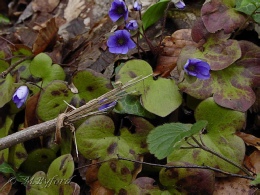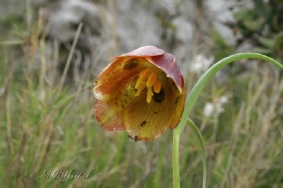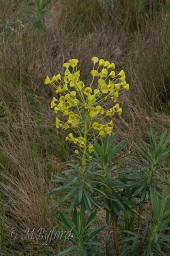


Hellebores in the wild, contrary to most popular literature, are not woodland, shade loving, moisture preferring plants.The photographs on our about us page show a range of habitats that clearly contradict that misconception.
They thrive in a range of habitats from coastal to 3000 feet up into the mountains, from lush floodplain meadows to barren limestone scree slopes and from moderate exposure to extreme exposure with temperatures from - 30C to +40C, in full sunlight with very high levels of U.V. exposure.
Many locations only receive light shade in the summer months from grasses and other vegetation growing taller than the hellebores. Of course by now they have set seed and are less active - indeed many go summer dormant to survive the summer drought. Most species have tough waxy/leathery leaves to reduce water loss,wind damage and U.V. Damage.
Where they do exist in woodlands they are in deciduous woodland or scrub so in the hellebore’s growing and flowering season they receive virtually full sun. The few in heavy shade rarely flower but produce large leaves. Helleborus thibetanus does do slightly better in light shade for me in the U.K.
The gallery below shows some wild hellebore habitats.
Hellebore Cultivation
Hepatica
In the garden hellebores do best in deep soils that do not waterlog in late autumn and winter. Ideally the soil should be a rich fertile loam with a good proportion of larger particles (sand) to improve drainage. If drainage is a problem then a raised bed or planting on a slope will prevent rhizome rot. Add plenty of organic matter/humus/well rotted leaf mould to condition the soil and top up each year with leaf mould mulch.
They will tolerate sandy and heavy clay soils, indeed most soil types with little fuss. Their roots can grow a couple of feet or more to find moisture and will penetrate through less suitable zones.
Plant where they can get full sun in the winter and early spring months and you will be rewarded with more, larger and more colourful flowers. Dappled shade in the summer is ideal to reduce water demands but N.B. hellebores are drought tolerant and will respond to extreme dryness by going dormant until the wet season returns. More hellebores have been killed by too much water and poor ventilation than by drought! You can always water when dry but it is very difficult to remove water from waterlogged soils.
Yes they will grow on north facing shady areas but less well.
A feed in late winter just as the flower stems emerge will improve flower quality any balanced N.P.K. fertiliser is fine. Helleborus niger seems to benefit from a little lime or calcium/magnesium carbonate added to the soil.
Some people cut off the leaves in winter to tidy them up and remove any fungal spores if they had black spot. It’s not really necessary but is a matter of personal choice. It doesn’t do any harm as the leaves will be shed that spring anyway and are hardly photosynthesising.
Propagate from seed - sow the seed as fresh as possible and keep lightly moist. If seed is allowed to dry out and is stored for more than a couple of months it goes dormant and will not germinate for a year or more and each year that passes results in a reduced germination %. This is the reason we only sell seed up until the end of August.
Large plants can be lifted and divided.
Plants that grow alongside hellebores in the wild can look stunning in the garden too for example:



Euphorbia
Fritillaria